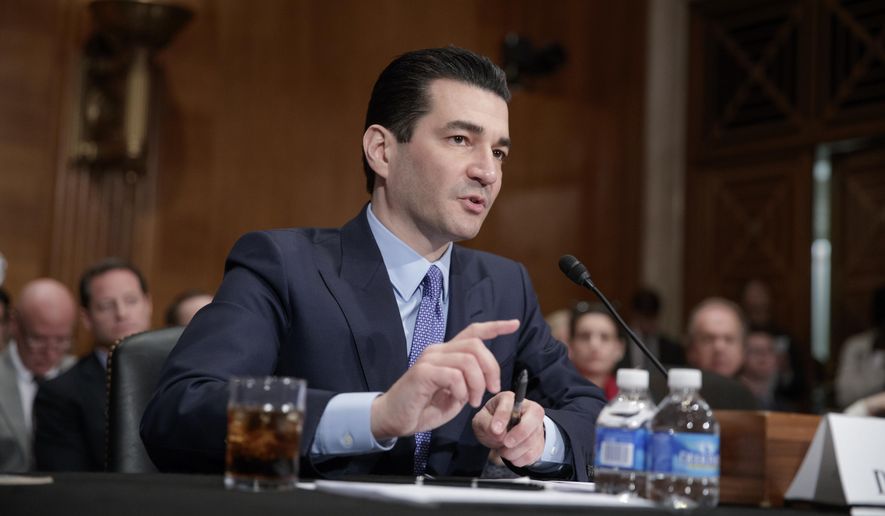Former Food and Drug Commissioner Scott Gottlieb said Sunday the dreaded “U.K. variant” of the coronavirus is probably circulating in the U.S. but has not been found because Americans aren’t tracking mutations as closely as other nations.
Canada recently joined the list of countries that have detected the variant within their borders, so it’s arrived in North America.
“I think it’s probably here in the United States, and it could be here in a reasonable number at this point,” Dr. Gottlieb told CBS’s “Face the Nation.”
Dr. Gottlieb said the British are sequencing a whopping 10% of virus samples.
“We probably need a better approach to more systematically sequenced strains in the United States to track changes and new variants in this virus,” he said. “We’re not doing that. And so we probably wouldn’t be detecting it if it was here in sort of low numbers, which I suspect it is.”
While alarming, scientists aren’t quite sure what to make of the U.K. variant of the coronavirus and another one in South Africa, both of which appears to be more contagious than the original strain.
Officials’ estimates of contagion are based on modeling instead of experimental data, and the variants don’t appear to be deadlier. Experts also don’t think they will evade vaccines.
Still, countries are using a patchwork of travel restrictions or testing requirements to try and keep the variant from spreading within their borders.
The Centers for Disease Control and Prevention on Christmas Eve said travelers from the U.K. must present a negative coronavirus test taken no more than 72 hours before departure.
The U.S. is recording nearly 190,000 new cases and 2,000 deaths per day, on average, and over 100,000 people are spending the post-Christmas days in the hospital due to COVID-19.
Dr. Anthony Fauci expects the coronavirus pandemic to get worse in the post-Christmas period due to the high baseline of transmission and the inevitable mixing of households and travelers over the holiday period.
“Even though we advise not to [travel], it’s gonna happen,” Dr. Fauci, the director of the National Institute of Allergy and Infectious Diseases, told CNN’s “State of the Union.” “As we get into the next few weeks, it might actually get worse.”
Dr. Gottlieb, however, pointed to signs that newly reported infections are plateauing.
The seven-day average of daily cases has dropped to about 188,000 instead of 216,000 a week ago, according to a New York Times tracker.
Ups and downs in hospitalizations and deaths tend to lag a few weeks behind case trends, however, so it could be a somber January.
“We have a grim month ahead of us,” Dr. Gottlieb said.
Experts hope the rollout of two approved vaccines will rein-in mortality rates, especially as older adults and people with chronic conditions in nursing homes are immunized.
Health workers and older adults were among the first to get vaccinated as the European Union formally kicked off its vaccine campaign on Sunday. The 27-nation bloc is using the Pfizer vaccine that was developed with German company BioNTech.
Dr. Fauci said he hopes the U.S. returns to “some form of normality” by fall if the vaccination campaign reaches the general population by April.
It will take “several months” to serve everyone who wants the shots, he said. People who receive the shots build up immunity within a few weeks.
Dr. Fauci said he doesn’t feel bad about moving the goalposts in public comments about the share of Americans who must be immunized to achieve herd immunity to the virus within U.S. society.
He started around 60% to 70% before nudging it as high as 85% as he monitored public acceptance of the vaccine.
“The bottom line is it’s a guesstimate. I gave a range,” Dr. Fauci told CNN’s “State of the Union.”
During Sunday’s interview, he settled on 75% to 85% as his best estimate of the share of U.S. residents who need to roll up their sleeves.
• Tom Howell Jr. can be reached at thowell@washingtontimes.com.




Please read our comment policy before commenting.